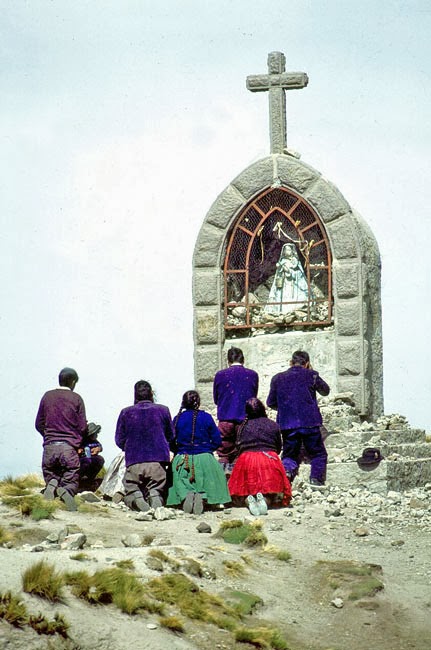In 1969 I showed my photographic portfolio to the editor of Clipper, the Pan American Airlines’ magazine. Displayed in it were my pictures
of several African adventures I had lived working on National Geographic stories.
They inspired him to assign me to a story he asked me to title: “A European
Looks at the Wild West.” (I’m from Belgium). And so I flew to Wyoming and
Montana to photograph Cowboys and Indians, ghost towns, fantastic landscapes,
and wildlife.
One day, in Yellowstone
National Park, I saw from my car a group of tourists photographing a moose from
a great distance. Why don’t they get
closer? I asked myself. Because they are not photographers, of
course. I knew better, and so I got
out of the car and walked all the way to within two steps of the animal.
Foolish as I was, I figured I
had nothing to fear from an herbivore. It examined me with suspicion, but let
me take some pictures and walk away.
I had gone some 50 paces
towards my car when I heard a noise behind me. Turning around I saw the moose
coming at me at a gallop—way too fast for me to escape running.
Automatically, for I had been attacked by mad
dogs before, I faced it holding my camera bag at arm’s length. Seconds later,
as the moose was at touching distance, I swung the bag into its face while
jumping sideways. A stone in my way made me fall backward instead, just as the
moose continued right over me. I leaped back on my feet, ready for the next
onslaught
But there was none. The moose
stopped 15 paces away, turned around, and stared at me as if wondering what to
do next. But it just stood there, unable perhaps to make up its mind. So, giving
the moose plenty of space this time, I walked back to my car.
--
En 1969, chez l’éditeur
de Clipper, le
magazine de la Pan American, une
compagnie d’aviation, je lui ai montré les photos des aventures africaines que j’avais vécues
en reportages pour le magazine National Geographic. Cela l’inspira à m’envoyer au
Wyoming et au Montana pour en ramener un
article qu’il me pria de titrer A European Looks At The Wild West—Regard d’un Européen sur l’Ouest sauvage
(je suis belge). J’y ai donc photographié des cowboys, des Indiens, des villes fantômes,
des paysages fantastiques et des animaux sauvages.
Un jour, au
Parc National de Yellowstone, j’aperçus de ma voiture un groupe de touristes
qui photographiait un élan de très loin. Pourquoi ne s’approchent-ils pas ?
me demandai-je. Mais ils n’étaient pas photographes et je ferais beaucoup
mieux. Je sortis donc de la voiture et
marchai jusqu’à pouvoir regarder l’animal dans les yeux. Idiot que j’étais, je
me disais que je n’avais rien à craindre d’un herbivore. Et malgré un regard malveillant
il me laissa prendre plusieurs photos et m’en retourner tranquillement.
Je m’étais déjà
éloigné d’une cinquantaine de mètres quand j’entendis un bruit derrière moi. Me
retournant, je vis l’élan foncer au galop dans ma direction. Il était beaucoup trop rapide pour
lui échapper.
Automatiquement,
car j’avais l’expérience d’attaques de chiens, je lui fis face, mon bras droit étendu de côté,
ma sacoche photo suspendue de la main comme une muleta de matador.
Quelques secondes plus tard, quand l’animal
allait me renverser, je lui lançai la sacoche à la tête sans en lâcher la courroie
et allais sauter de côté. Mais une pierre coinça l’un de mes pieds et me fit
basculer en arrière. Sans s’arrêter, l’élan passa au-dessus de moi, s’arrêta à une
quinzaine de mètres, se retourna et me
fixa des yeux. Prêt à une nouvelle charge, je m’étais déjà relevé.
Mais l’élan,
qui ne me lâchait pas des yeux, semblait ne pas pouvoir décider son prochain
pas. Je n’attendis pas sa décision et repris ma marche, cette fois à une distance prudente de l’élan.
















































